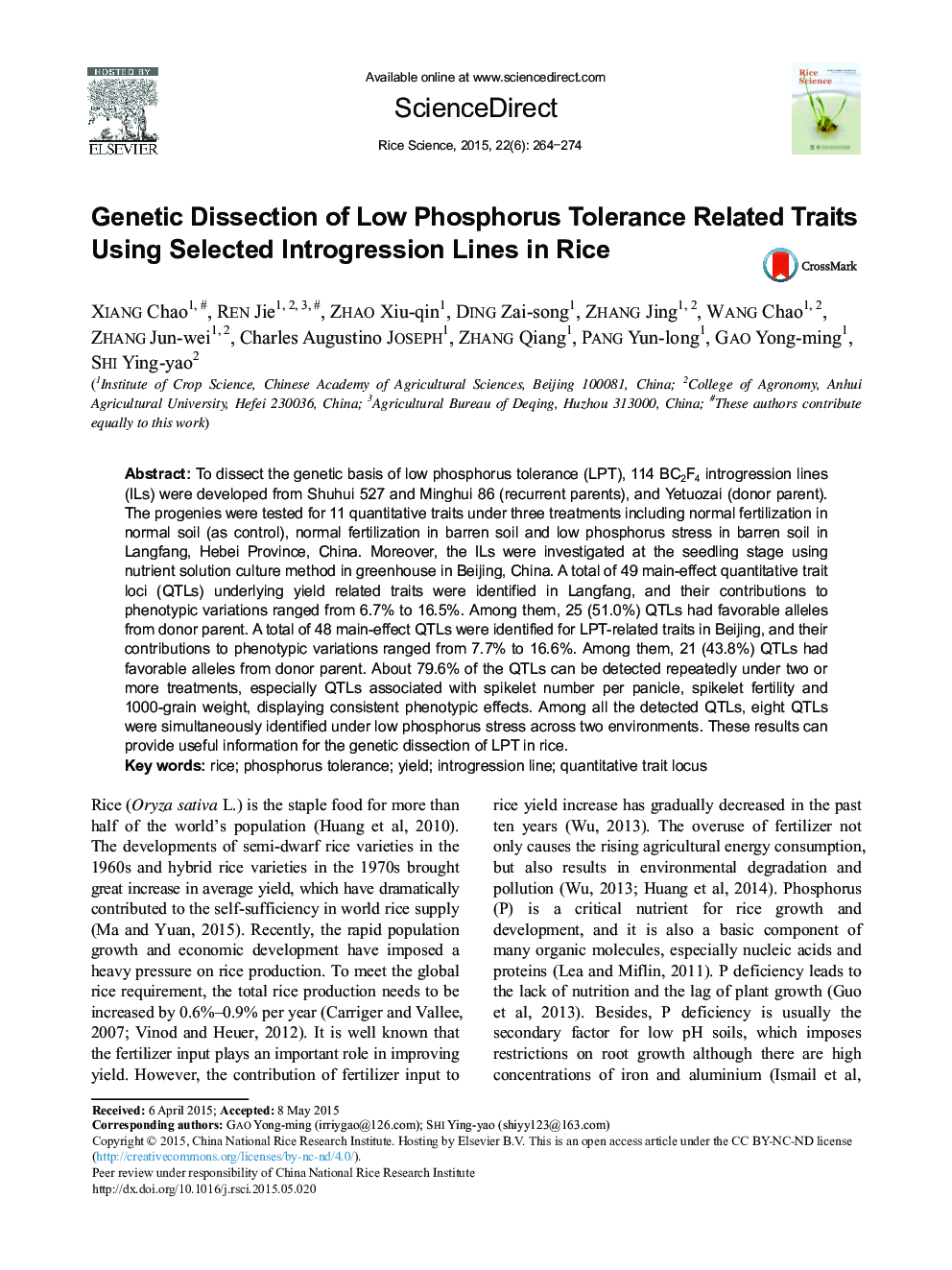| Article ID | Journal | Published Year | Pages | File Type |
|---|---|---|---|---|
| 4501709 | Rice Science | 2015 | 11 Pages |
To dissect the genetic basis of low phosphorus tolerance (LPT), 114 BC2F4 introgression lines (ILs) were developed from Shuhui 527 and Minghui 86 (recurrent parents), and Yetuozai (donor parent). The progenies were tested for 11 quantitative traits under three treatments including normal fertilization in normal soil (as control), normal fertilization in barren soil and low phosphorus stress in barren soil in Langfang, Hebei Province, China. Moreover, the ILs were investigated at the seedling stage using nutrient solution culture method in greenhouse in Beijing, China. A total of 49 main-effect quantitative trait loci (QTLs) underlying yield related traits were identified in Langfang, and their contributions to phenotypic variations ranged from 6.7% to 16.5%. Among them, 25 (51.0%) QTLs had favorable alleles from donor parent. A total of 48 main-effect QTLs were identified for LPT-related traits in Beijing, and their contributions to phenotypic variations ranged from 7.7% to 16.6%. Among them, 21 (43.8%) QTLs had favorable alleles from donor parent. About 79.6% of the QTLs can be detected repeatedly under two or more treatments, especially QTLs associated with spikelet number per panicle, spikelet fertility and 1000-grain weight, displaying consistent phenotypic effects. Among all the detected QTLs, eight QTLs were simultaneously identified under low phosphorus stress across two environments. These results can provide useful information for the genetic dissection of LPT in rice.
